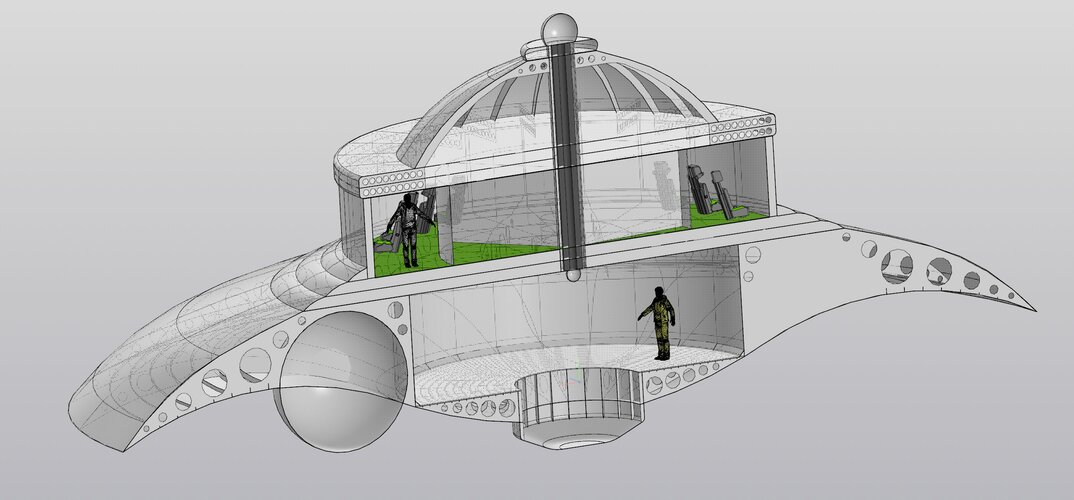- Joined
- 13 August 2007
- Messages
- 8,445
- Reaction score
- 10,999
This here is discussion about future after 6th generation Fighter
First what is the 6th generation Fighter Jet ?
in Short:
Away from dog fight toward beyond-visual-range air-to-air missile combat or Air-to-ground missile strike
with help of Drones, Satellite, Advance Computer systems (even A.I.) with high-capacity networking.
Either Piloted, Remote controlled, or complete A.I. aka the Fighter plane is a Robot !
Advanced variable-cycle engines able to cruise economically, but deliver high thrust if needed.
option for energy weapons instead of a mechanical Gun
The 6th Gen should be ready in 2040 and replace allot of Aircraft like: Rafale, F-18, F-15, F-22, Eurofighter, J-20.
Now my speculation of successor for 7th Gen around 2050-2080 time period.
most important change will be Engines it burn alternate fuel since Oil get rare or is depleted.
This here is most drastic change for 7th Gen, because it depends what for fuel it will use synthetic kerosine, liquified natural Gas or hydrogen
it will shape the form of Aircraft and aerodynamics, do it propellant tanks and it bulky fuel (like Hydrogene),
I beliefe that the Gauss Gun (coil Gun) could become a operational weapon within next 10 years,
Thanks to development in Electric cars on battery and magnets for electro motors (thanks Musk)
The Fighter could theoretically use a Gauss Gun as hypersonic weapon if gun get power to do this without exploding.
Also get the 7th gen advance ECM and advance crypto communication to prevent that Enemy upload false information.
Here will be biggest arms race in cryptology in data communication for 7th gen with help of Quantumcomputers
Also that 7th Gen could fully automatic with A.I. making the plane a Robot.
Since no pilot is onboard this could impact on the form of Aircraft and aerodynamics, by removing the cockpit.
but a pure A.I. fighter could bring dangerous situation, if A.I. goes rogue and starts to attack airliners...
The 8th Gen could be in time period of years 2120~2130
This time table depends of life time of 7th gen and it use and operation cost
certain it will feature new Materials and productions methods of 22th century
Even New Engines maybe ones that use superconductor MHD to propel Air electrodynamicly and produce thrust.
but bigger change it will undergoes is possibly change in military doctrine,
Like Dog-fight is back introduce, or back to Pilots (or make the Aircraft a Cyborg !)
The 9th Gen introduce in 2180 or after 2200
6th 7th and 8th will feature high cost do all the new materials and gadgets
And Airforces will use them so long as possible.
and there purpose will be defined by Wars and Military doctrine of 22 the century
i can only speculate to technology in 200 years, it could look not like Aircraft of 21th century
First what is the 6th generation Fighter Jet ?
in Short:
Away from dog fight toward beyond-visual-range air-to-air missile combat or Air-to-ground missile strike
with help of Drones, Satellite, Advance Computer systems (even A.I.) with high-capacity networking.
Either Piloted, Remote controlled, or complete A.I. aka the Fighter plane is a Robot !
Advanced variable-cycle engines able to cruise economically, but deliver high thrust if needed.
option for energy weapons instead of a mechanical Gun
The 6th Gen should be ready in 2040 and replace allot of Aircraft like: Rafale, F-18, F-15, F-22, Eurofighter, J-20.
Now my speculation of successor for 7th Gen around 2050-2080 time period.
most important change will be Engines it burn alternate fuel since Oil get rare or is depleted.
This here is most drastic change for 7th Gen, because it depends what for fuel it will use synthetic kerosine, liquified natural Gas or hydrogen
it will shape the form of Aircraft and aerodynamics, do it propellant tanks and it bulky fuel (like Hydrogene),
I beliefe that the Gauss Gun (coil Gun) could become a operational weapon within next 10 years,
Thanks to development in Electric cars on battery and magnets for electro motors (thanks Musk)
The Fighter could theoretically use a Gauss Gun as hypersonic weapon if gun get power to do this without exploding.
Also get the 7th gen advance ECM and advance crypto communication to prevent that Enemy upload false information.
Here will be biggest arms race in cryptology in data communication for 7th gen with help of Quantumcomputers
Also that 7th Gen could fully automatic with A.I. making the plane a Robot.
Since no pilot is onboard this could impact on the form of Aircraft and aerodynamics, by removing the cockpit.
but a pure A.I. fighter could bring dangerous situation, if A.I. goes rogue and starts to attack airliners...
The 8th Gen could be in time period of years 2120~2130
This time table depends of life time of 7th gen and it use and operation cost
certain it will feature new Materials and productions methods of 22th century
Even New Engines maybe ones that use superconductor MHD to propel Air electrodynamicly and produce thrust.
but bigger change it will undergoes is possibly change in military doctrine,
Like Dog-fight is back introduce, or back to Pilots (or make the Aircraft a Cyborg !)
The 9th Gen introduce in 2180 or after 2200
6th 7th and 8th will feature high cost do all the new materials and gadgets
And Airforces will use them so long as possible.
and there purpose will be defined by Wars and Military doctrine of 22 the century
i can only speculate to technology in 200 years, it could look not like Aircraft of 21th century

